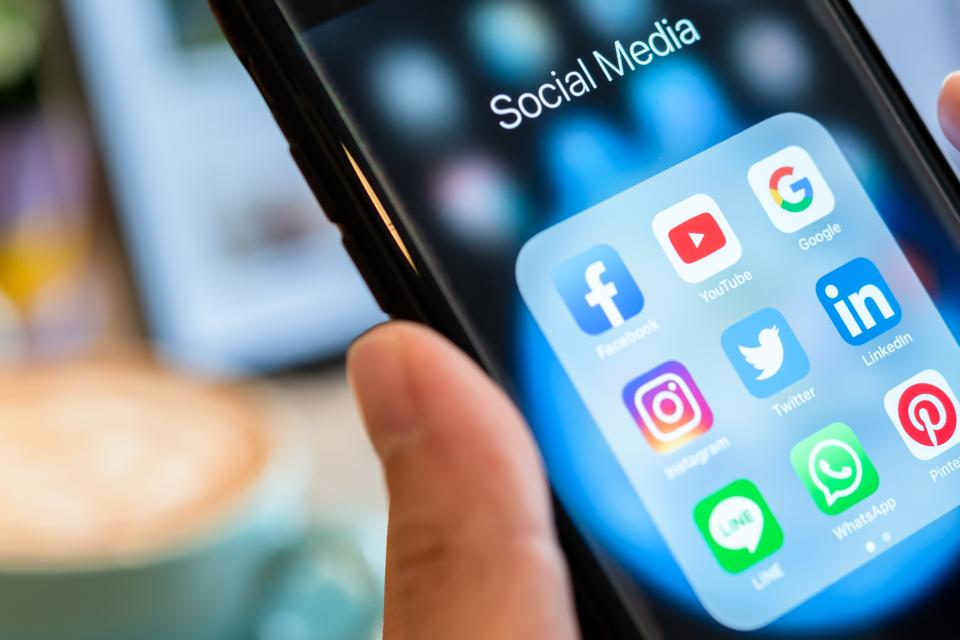Maximizing Multi-platform Social Media Impacts
How does consumer engagement evolve when brands post across multiple social media?

Mastering the complex social media world is a lot like trying to get your footing in constantly shifting sand. It seems like a new social media channel makes a big splash every six months; meanwhile, algorithms intended to boost your exposure keep changing and becoming increasingly monetized.
Yet, mastering social media has never been more important for raising brand awareness and engaging customers among businesses of all sizes.
All this leaves many in the business world scratching their heads on how to maximize the return on their social media ad budgets. My recent research with Adjunct Assistant Professor Vasu Unnava addresses this issue.
Making Sense of Multiple Platforms and Multiple Effects
Consumers seek, create and consume content across various social media platforms, such as Facebook, TikTok, YouTube, Twitter, and Instagram. There are now 4.62 billion social media users worldwide, equivalent to more than 58% of the world's total population. They use these platforms to connect with individuals, influencers, and brands. That's why brands must develop and implement a multi-platform social media strategy to find new customers and keep existing customers actively engaged.
To create a multi-platform social media strategy, the brand not only distributes its content across these social media platforms but tailors its posts to each platform's functions and features.
Why multi-platform? Why not keep things simple by sticking to just one or two platforms, like Facebook or Twitter? Brand content on one platform not only drives engagement directly on the platform itself, known as "direct effects," but it also affects engagement on other social media platforms where the brand operates. We call these "spillover effects."
Not to mention, some brand posts on a platform may continue to engage consumers well into the future. These are known as "carryover effects." That means brand managers should think past a "one and done" mentality when creating a brand post. After all, there's a reason it's often said that anything on the internet is "forever."
Measurements Focus on Users
In our research paper, "How does consumer engagement evolve when brands post across multiple social media?" published in the Journal of the Academy of Marketing Science, we devised a dynamic model to connect brand-generated content and engagement both within and across social media platforms. We validated the approach by evaluating the model with data collected from multiple top-ranking brands, such as Disney and Coca-Cola, that have a presence on three of the most commonly brand-utilized platforms: Facebook, Twitter, and Instagram.
Our measurements focus on user responses to brand posts across various platforms. This focus allows social media managers to learn how effectively these platforms drive both "direct" and "spillover" engagement across the media. In addition, since the dataset spans several brands over time and across multiple platforms, the results offer practical insights that other brands can generalize and apply for themselves.
Our results indicate that the carryover effects of posts are stronger on Instagram than on Twitter or Facebook. In other words, brand posts sustained for longer on Instagram compared to the other platforms. In the case of spillovers, Facebook comes in at the top of driving engagement to a brand's presence on other platforms. Facebook also has the highest direct effects on consumer engagement with a post.
Modeling How to Allocate Resources
So, how should managers allocate their brand's advertising dollars across multiple social media platforms to best leverage direct, spillover, and carryover effects from their branded content? Our research has several implications for marketing practitioners using social media. Apart from helping determine the three effects outlined above, the study presents two approaches to help brands find their footing when allocating their resources across multiple social media platforms.
The first approach offers an elasticity-based method to maximize engagement. Using this approach and based on the firms and time period represented in the data, we found that firms should, on average, allocate 26% of their ad resources to Instagram, 63% to Facebook, and about 11% percent to Twitter.
The second approach proposed in the article optimizes the return on investment (ROI) by linking "upstream metrics," like engagement, to "downstream metrics," like sales. We do not enumerate the size of these allocations due to the lack of data on downstream metrics. However, the study does provide a straightforward formula that social media managers can apply to estimate the ROI-maximizing allocations.
Although we limited our study to Facebook, Twitter, and Instagram, the approach also extends to other platforms. Additionally, the methodologies developed help any brand, regardless of size or revenue.
To learn more about our research and approaches, see our full paper.